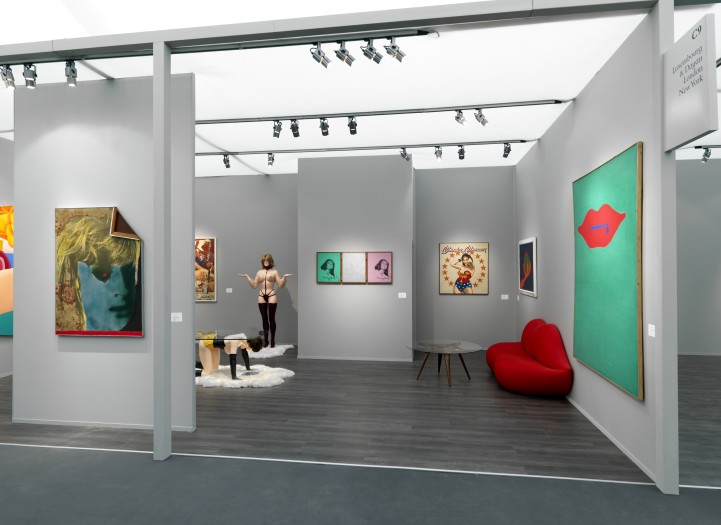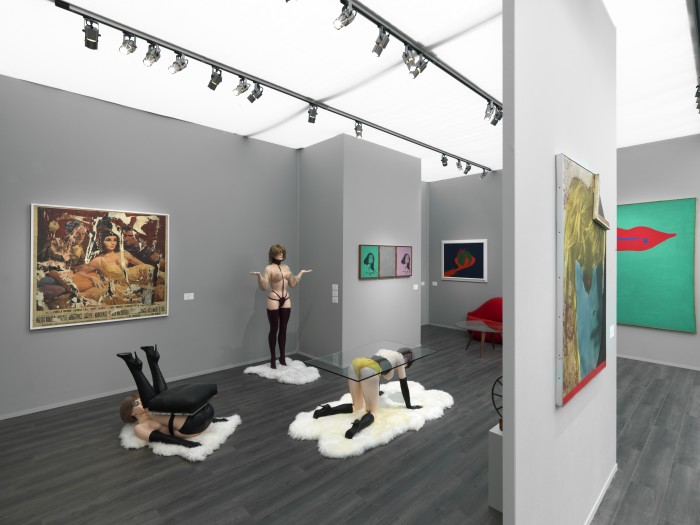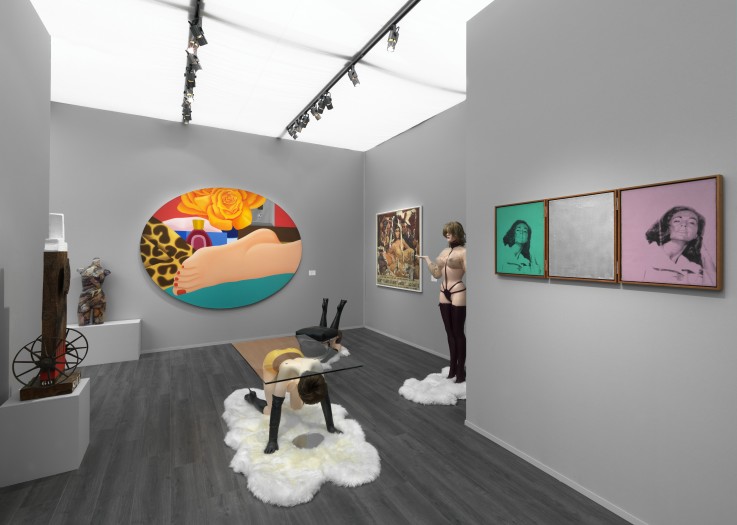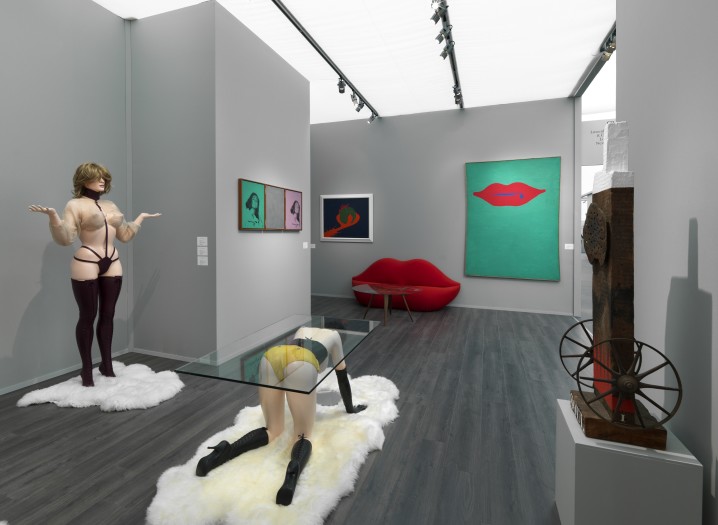For their opening participation at Frieze Masters, this year Luxembourg & Dayan present Pop Not Pop, an exhibition that surveys the international variations of Pop Art through the female form. The selection draws upon iconic Pop figures from America and Britain, such as Andy Warhol and Allen Jones, while also looking to those European variations that often form the backbone of the gallery’s exhibition programme both in New York and London, such as Nouveau Réalisme, Arte Povera and Neo Dada. While many of the art works are visually different, as the exhibition demonstrates, interpretations of Pop and responses to the female, as both a form and subject, transverse geographical origins and boundaries between high and low culture, producing many of the twentieth century's iconic images.
Luxembourg & Dayan is delighted to present some the most renowned sculptures produced during the movement’s history; Pop Not Pop features a full set of Allen Jones Women as Furniture, rarely seen together an entire group. The works deliberately challenged accepted canons of fine art and since their production have been exhibited widely and achieved increasing international acclaim. Consisting of life-size female mannequins, the women are at once submissive and sexually provocative, their forms doubling as a hat- stand, table and chair. Similarly using the manufactured products of modern society, Arman’s Don’t Touch appropriates prefabricated mannequin hands sealed within polyester resin, creating a female form that combine the Pop spirit with a kind Surrealistic of eroticism. Wesselmann's Bedroom Painting #17, similarly uses fetishized details of a foot in a fragmentary glimpse of a bedroom whereby the expressive power derives from the calculated use of erotic symbols become amalgamated with commonplace domestic and consumer objects.
Whether appropriating in a celebratory or critical spirit, many Pop artists encouraged a new contemporary vision through their perception of visual, cultural, and commercial icons. Iconic females strongly feature within Pop Not Pop and provide the focus of for Rotella’s Cleopatra Liz, Ramos’s Wonder Woman No.2, and Warhol’s Ethell Scull Triptych. For Rotella who explored the manufactured image, film icons became a substantial subject matter in his decollages, retaining much of the poster’s original composition and informative content, reinforcing the prevalence of the female icon as integral part of the metropolitan fabric. Ramos, similarly appropriates many of his subjects from the wider cultural fabric, in his case from cartoon characters, and in 1963, his introduction of female characters portray curvaceous pin-up girls posed, at times ironically. Warhol, well-known for his celebrity portraits, this triptych comes a year after his Marilyn series and marks his first portrait commission; here, Warhol presents his subject like a fashion icon, blurring the lines between citizen and celebrity, framing her so that she becomes the ultimate embodiment of the spirit of the age.
In response to his contemporaries such as Warhol, Raysse, as one of Pop Art’s chief exponents in France during the 1960s, challenges and brings a fundamentally European interpretation to the movement. Tableau Casse features an enlarged, photocopied image of an unknown, androgynous beauty, over painted with an alien palette and layered with fragments of wallpaper. The work reflects how by the mid-1960s he had grown weary of the hegemonic discourses that surrounded American Pop Art and saw it as ‘a simple codification of beauty’. Pop Not Pop will also feature works by other artists including César, Robert Indiana, and Jurry Zielinski.





